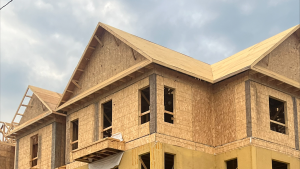Does the early occupancy of a project or improvement indicate the achieving of substantial performance?
Not at all.
Edward Lynde, partner with Fasken Martineau DuMoulin LLP, told the Daily Commercial News
sections of the CCDC-2 2020 and CCA-1 make it clear the two should not be confused.
“Early occupancy, which would otherwise allow an owner to take occupancy of part or all of the work, should not be considered or conflated to mean achievement of substantial performance of the contract,” he said.
“While early occupancy is predicated only upon the agreement of the parties, substantial performance of the contract is predicated upon compliance with the governing legislation. Accordingly, the legal test for substantial performance pursuant to the governing legislation — in Ontario, section 2 of the Construction Act — remains firmly in place.”
The reasons motivating owners to seek early occupancy were outlined in last week’s Legal Notes column. They can, for example, stem from the occupant’s need or desire to begin using the facility and for the owner to begin collecting rent.
On the other hand, substantial performance is closely defined by legislation and includes the key matter of payment to contractors and the correction of any defects and deficiencies. The Construction Act is quite clear concerning these aspects.
Under CCDC-2 2020, GC 2.2.15, the third-party consultant, whose identity, role, capacity and authority is set out in the construction contract, will conduct reviews of the work.
He or she will then verify the validity of the contractor’s application for substantial performance of the work to determine the date of substantial performance and to verify that ready-for-takeover has been attained.
This will be done no later than 20 days after application from the contractors. That verification is a trigger for payments of holdbacks from any previous progress payments.
The specificity of these requirements underlying substantial completion is important to note.
However, substantial performance does not necessarily mean everything is fully complete. It’s important to understand what allowances are permitted.
Under Ontario’s Construction Act, Section 2, “a contract is substantially performed, (a) when the improvement to be made under that contract or a substantial part thereof is ready for use or is being used for the purposes intended; and (b) when the improvement to be made under that contract is capable of completion or, where there is a known defect, correction, at a cost of not more than,
(i) three per cent of the first $1,000,000 of the contract price,
(ii) two per cent of the next $1,000,000 of the contract price, and
(iii) ne per cent of the balance of the contract price.”
“The test under Section 2 is conjunctive and both sections must be met in order for substantial performance to be achieved,” Lynde said.
Lynde explained overlaps could arise between early occupancy and substantial performance in terms of whether the improvement made under a contract is, in fact, ready for use or is being used for the purposes intended.
“Early occupancy could also inform competing positions regarding potential outstanding scope of work and quantification of defects and deficiencies.”
In practical terms, Lynde said an owner would unlikely agree to early occupancy unless the project or improvement was ready to be used.
“That would likely implicitly include minimal outstanding scope of work and/or correction of defects or deficiencies,” he said.
Nevertheless, contractors might seize the chance to claim that early occupancy was evidence of substantial performance being achieved, said Lynde, particularly in cases where early occupancy of the entirety of the work has been agreed upon, as allowed under GC 12.2.1 of the CCDC-2 2020 and SCC 12.2.1 of CCA-1.
Therefore, care needs to be taken by both the owner and the contractor when setting out any agreements for early occupancy.
As Lynde concludes, “The factual matrix and circumstances surrounding the agreement by the parties to early occupancy could be an important factor to the determination of whether substantial performance has been achieved.”
John Bleasby is a Coldwater, Ont.-based freelance writer. Send comments and Legal Notes column ideas to editor@dailycommercialnews.com.









Recent Comments